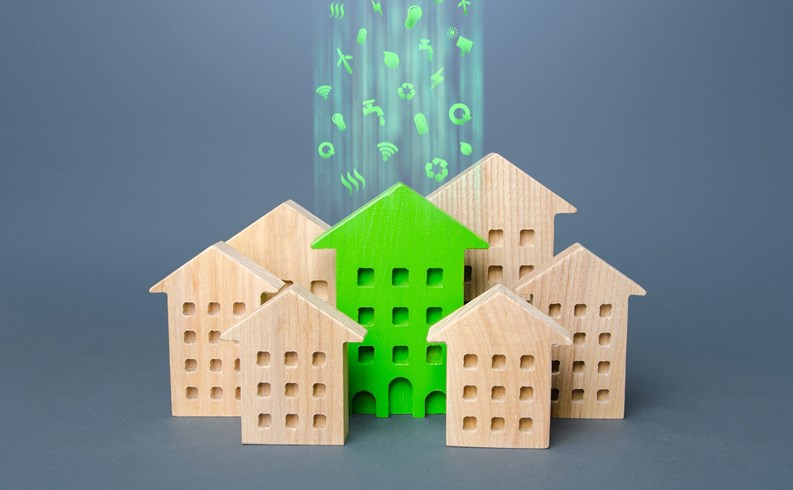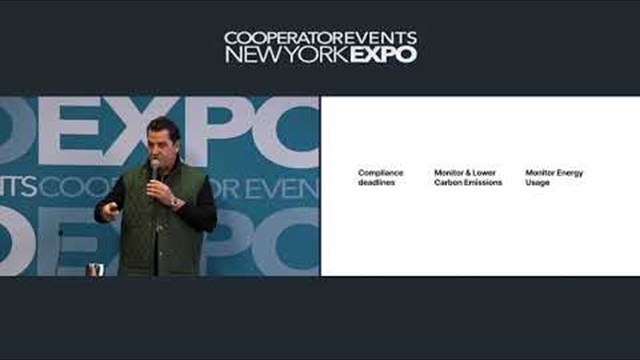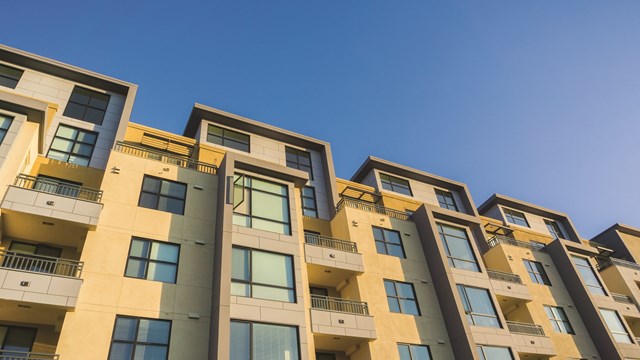2025 is a critical year for compliance with Local Law 97, which seeks to reduce New York City’s carbon footprint to zero by 2050. This year marks the beginning of the five-year period from 2025 to 2030, in which key requirements must be met, and strategies for achieving those requirements must be enacted.
The questions around the law and its ramifications are many—and not least of which is whether the cost of compliance is too onerous for some shared-interest communities to absorb. Would—or perhaps even should—some communities be better off simply paying the fines for noncompliance rather than bear the greater cost (and general disruption) of the upgrades, retrofits, and replacements of major building systems necessary to meet the goal of a zero carbon footprint?
What’s Expected
Each building has a different specific pathway to compliance, depending on their specific circumstances,” explains Faith Rodriguez-Price, director of compliance for Maxwell-Kates, a Manhattan-based real estate management firm. “However, all properties are subject to a reduction in emissions if not yet met. Most buildings 25,000 square feet and above are required to meet new greenhouse gas (GHG) emission limits beginning in 2024 through 2029 at 1,136 tCO2e/yr., with stricter limits coming into effect in 2030. The goal is to reduce emissions by 40% by 2030, and to achieve net zero emissions by 2050.”
The requirements for 2025 include filing LL97 documents with the Department of Buildings (DOB) by May 1. This process includes obtaining building drawings and stacking diagrams for LL97 submissions going forward, and completing prescriptive measures if subject to Article 321 and not under the emission cap for 2030 limits. This requirement is applicable to buildings where more than 35% of the units are subject to rent regulation, or if the property is an HDFC co-op or has more than one unit in a federal project-based housing program.
Don’t Leave Money on the Table
The question for some (and possibly many) co-op and condominium communities is whether the cost to do major overhauls for LL97 compliance—converting from fossil fuel utilities to electric, for example—is so high that they might be financially better off just to pay the fines associated with noncompliance and spare themselves the cost, hassle, and risk of a major capital project.
William McCracken, a partner with Moritt Hock & Hamroff, a law firm based in New York City, says, “If you’re talking about defying the law, you must keep in mind what the law requires. You must file your reports on time, in any event. That’s May 1 , and every May 1 going forward. The Department of Buildings is giving a 30-day grace period to file; that’s June 30 this year. If you don’t file, and blow off the whole thing, you’re looking at larger fines. The fines will pile up just for not filing. So you must file—there’s no justification for failing to do so.
“Then the question becomes, since we are over our legal emissions limits, should we pay the fine, or spend the millions of dollars to do the work? The answer is it depends. I don’t think it’s as narrow as just comparing the fine to fixing the problem. It’s an annual fine, so it continues to accrue; it piles up. Secondly, there are adjustments and mitigations, and compliance tasks that you can benefit from if you show the DOB that you are trying to achieve compliance. To get the benefits of those adjustments and mitigations, you must show good faith efforts. If you just blow it off, then you’re not in position to mitigate fines or adjust time periods. Effectively, you’re leaving money on the table.”
Another consideration for compliance, notes McCracken, is LL97 aside, there are other laws, and other reasons why a shared interest community, like any property owner, might be compelled to make their building energy efficient. “You’re not escaping the problem,” he says. “We are entering a future in New York City that is becoming more energy efficient. Apartments in more climate-friendly buildings sell for more. That’s another reason to comply. If your building becomes known as a ‘dirty’ building, the owners will pay a penalty on resale price, by bad reputation.”
That said, McCracken advises that “If you’re facing a small fine for LL97, and you’ve done everything you can but for a multimillion dollar project that the people in the building can’t afford, it might be better to pay the fine. But make sure you give all your best efforts to get to compliance. My advice is to make sure you’ve taken all the low-hanging fruit, and that it just doesn’t make sense to do the big project.”
How to Pay for Improvements
Of particular concern for co-op and condominium communities is how to pay for improvements required under LL97. Should the funds come from an assessment, permanent maintenance increase, or from a community’s capital reserves? While this is, of course, a very pressing question, there are a few others that need to be answered first, including about the building’s physical plant and current energy profile, for starters.
Rodriguez-Price gives this roadmap: “A qualified energy engineer should be hired to conduct an audit at the building to identify any equipment that needs to be replaced. They will identify the cost for upgrades and will submit an application on behalf of the building to any incentive programs that the building may be eligible for (Con-Edison, NYSERDA, PACE, etc.) to provide some relief. After the findings of the report, we can then establish a roadmap for the next three to five years as to what we have to do, when we have to do it, how much it will cost, and how we will pay for it. We will also come up with priorities; what are the must-haves, vs. the nice-to-haves. Every building should already be developing their plan and building up their capital reserves, which we consider to be industry best practice. They may do this by assessing the shareholders or unit owners, as well as refinancing their underlying mortgage if they’re a co-op, or for condos, applying for construction loans. Most co-ops and condos are also increasing the monthly maintenance charges to further bolster funds to cover these and other costs.”
“One of the challenges of preparing for Local Law 97 is that the optimal plan of action differs for every single property,” says Punit Shah, Vice President of Existing Buildings at Bright Power, Inc., an energy engineering and building compliance firm based in NYC. “There is no one-size-fits-all checklist to follow. Every property has unique circumstances and requirements that come into play when outlining decarbonization steps. Fortunately, no matter the property type, there is a roadmap to ensure your building is making the necessary progress for carbon reduction and future savings. This roadmap consists of three phases: Assessment, Planning & Implementation, and Measurement & Verification. Each of these phases can be broken into achievable milestones with property-specific, year-by-year goals.
“The next two years are crucial for establishing a strong decarbonization plan, and the first milestone buildings should already have completed—or at least have in progress—is an Assessment,” Shah continues. “During the assessment phase, buildings benefit greatly from engaging certified engineers to complete an energy audit, including an analysis and evaluation of major systems associated with heating, cooling, domestic hot water, ventilation and lighting. A thorough energy audit not only provides detailed recommendations for building and equipment upgrades, but also outlines the financial impact of implementing upgrades, providing an understanding of the expected payback periods and ultimately your ROI.
And importantly, Shah notes, “Completing an audit is also one of several requirements set by the Department of Buildings (DOB) for any building that plans to seek penalty mitigation via a Good Faith Effort. Completing your property’s assessment should include a clear plan for LL97’s future anticipated carbon caps. More than 70% of multifamily buildings will require major upgrades in order to comply, with approximately 50% requiring electrification before the more aggressive 2030 caps go into effect. If your property’s pathway to fine elimination in 2030 relies on electrification, this phase becomes even more urgent.”
As the process rolls out over the next year, “Rely on and listen to your professionals,” says Rodriguez-Price; “your management, licensed engineer, licensed architect, energy consultant, legal counsel, and accountants. These issues and decisions are complex. Coming to the right approach for your co-op or condo must involve the input of all key stakeholders. Do not try to short-circuit the process. Too much is at stake for your communities.”
AJ Sidransky is a staff writer/reporter for CooperatorNews, and a published novelist. He may be reached at alan@yrinc.com.










Leave a Comment